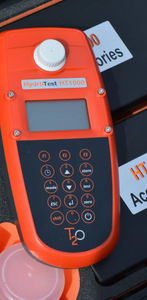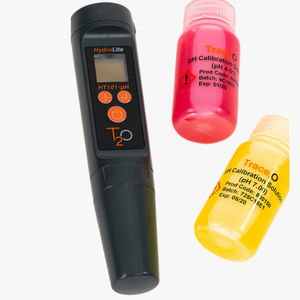
Portable turbidity meter HTTURBmonitoring
Add to favorites
Compare this product
Characteristics
- Options
- portable, monitoring
Description
Turbidity, or cloudiness, has often been considered a superb first line indicator of water quality. Turbidity may be caused by growth of phytoplankton. Human activities that disturb land, such as construction, mining and agriculture, can lead to high sediment levels entering water bodies.. Erosion rates contribute large amounts of turbidity to nearby waters, and industries such as quarrying, mining and coal recovery can generate very high levels of turbidity from colloidal rock particles. High turbidity levels can reduce the amount of light reaching lower depths, which can inhibit growth of submerged aquatic plants, reducing oxygen levels. In drinking water, the higher the turbidity level, the higher the risk that people may develop gastrointestinal diseases. Suspended solids interfere with water disinfection with chlorine because the particles act as shields for the virus and bacteria. Similarly, suspended solids can protect bacteria from UV sterilisation of water. The HTTURB IR turbidity meter offers fast, precise on-site testing using the industry standard nephelometric method (scattered light at an angle of 90°). The wide range makes this a multi-purpose instrument for a variety of possible applications and the IR light source ensures suitability for both coloured and colourless liquids. The unit comes complete with calibration standards and accessories, packaged in a hard shell carry case.
Catalogs
HTTURB
1 Pages
Related Searches
- Concentration analyser
- Monitoring analyser
- Dust analyzer
- Spectrometer
- Portable analyser
- Digital analyser
- Waterproof analyzer
- Trace analyser
- PH meter
- Optical spectrometer
- Digital pH meter
- Conductivity meter
- Portable pH meter
- Portable spectrometer
- Photometer
- Digital conductivity meter
- Dissolved oxygen sensor (DO)
- Handheld analyser
- Nephelometer
- Automatic spectrometer
*Prices are pre-tax. They exclude delivery charges and customs duties and do not include additional charges for installation or activation options. Prices are indicative only and may vary by country, with changes to the cost of raw materials and exchange rates.








